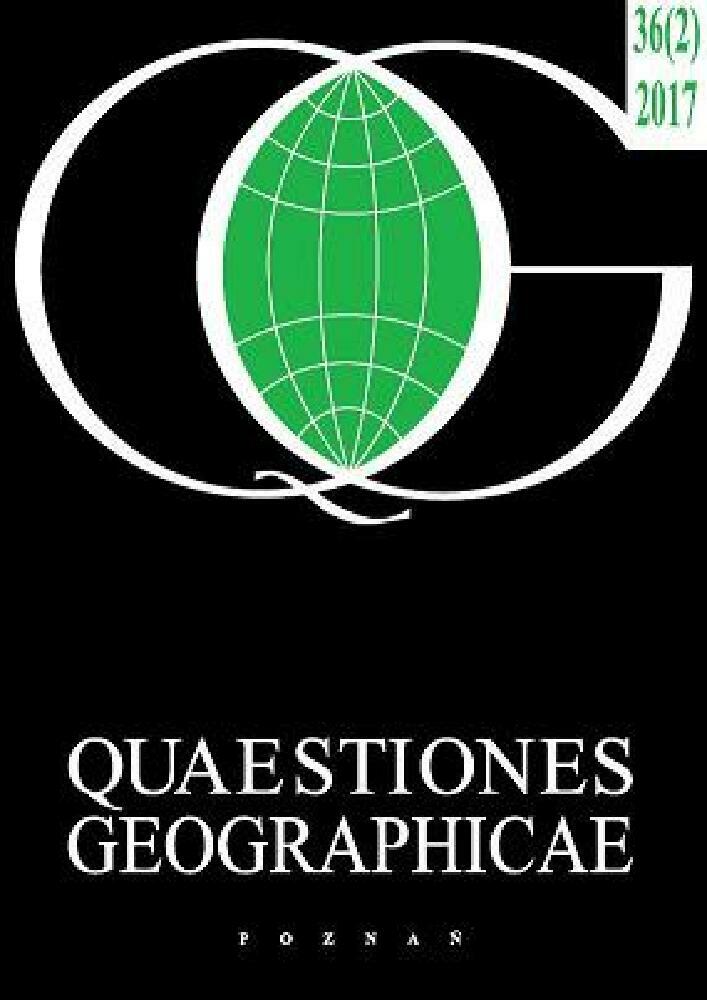Abstract
This work examines changes in the cultivation of olive groves in the region of Andalusia since the accession of Spain to the European Common Market (1986). The first phase is marked by the triumph of productivism in which some of the basic elements of this model (specialisation and intensification) are overwhelming, according to the statistical sources used for this research, although the behaviour in terms of corporate concentration can be considered unique. Also notable, as we will explain later, are other less desirable effects of the process, which can currently be considered environmentally unsustainable. As the weaknesses and contradictions of the model have become evident, in the recent years – as a result of the new stimuli provided by the Common Agricultural Policy – more attention is paid to the opportunities offered by rural development. For the moment, the results of this approach have been limited, although the 2015–2020 planning period could be decisive for its reorientation.
References
AEMO – Asociación Española de Municipios del Olivo, 2010. Aproximación a los costes del cultivo del olivo. Cuaderno de conclusiones del seminario AEMO. http://www.aemo.es/get.php?pathext=descargas/Costes_AEMO.pdf.
Almstedt A., 2013. Post-productivism in rural areas: A contested concept. In: Lundmar L., Sandström C. (eds), Natural resources and regional development theory. Institutionen för geografi och ekonomisk historia, Umeå Universitet, Umeå: 8–22.
Anglés S., Veysseyre J., Cohen M., 2013. Appelations d’origine protégée oléicoles, terroires et territoires méditerranéens: une analyse comparative entre les appelationsoléicoles en France et Andalousie. Sud-Ouest Européen, Revue géographique des Pyrénées et du Sud-Ouest 36: 123–133.
Beaufoy G. 2001. The environmental impact of olive oil production in the European Union: Practical options for improving the environmental impact. http://ec.europa.eu/environment/agriculture/pdf/oliveoil.pdf.
Belletti G., Canada J.S., Marescotti A., Vakoufaris H., 2015. Linking protection of geographical indications to the environment: Evidence from the European Union olive-oil sector. Land Use Policy 48: 94–106.
Berbel Vecino J., Giannocaro G., 2013. Economía de los olivares en Andalucía. In: Andalucía. El olivar. Grupo de Estudios Avanzados sobre Territorio y Medio Ambiente, Sevilla: 133–146.
Cohen M., Angles S., Marques C., Jimenez E.A., 2012. L’oliveraie entre espace productif et patrimoine paysager. Une comparaison Andalousie (Espagne) et Alpes du Sud (France). In: Luginbühl Y., Terrason D. (eds), Paysage et développment durable. Quae éditions, París: 143–155.
Consejo Oleícola Internacional, 2015. Estudio internacional sobre costes de producción del aceite de oliva. http://www.internationaloliveoil.org/documents/index/1815-international-olive-oil-production-costs-study.
Evans N.J., 2001. Reflexiones en torno al modelo agropecuario productivista. In: García Pascual F. (ed.), El mundo rural en la era de la globalización: incertidumbres y potencialidades. Ministerio de Agricultura, Pesca y Alimentación, Madrid: 45–64.
Guzmán Álvarez J.R., 2005. Territorio y medio ambiente en el olivar andaluz. Sevilla. Consejería de Agricultura y Pesca de la Junta de Andalucía.
Junta de Andalucía, 2011. LEY 5/2011, de 6 de octubre, del olivar de Andalucía. Boletín Oficial de la Junta de Andalucía 205: 6–13.
Junta de Andalucía, 2014. Programa de desarrollo rural de Andalucía. Subprograma temático del sector del olivar. http://www.juntadeandalucia.es/export/drupaljda/Subprograma%20Tematico%20del%20sector%20del%20olivar%20Junio%202015.pdf.
Ministerio de Agricultura, 1975. Inventario agronómico del olivar. II Provincia de Jaén.. Dirección General de la Producción Agraria, Madrid.
Moreno-Pérez O.M., 2013. Reproducing productivism in Spanish agricultural systems. Research in Rural Sociology and Development 19: 121–147.
Paniza Cabrera A., García Martínez P., Sánchez Martínez J.D., 2015. Análisis de la expansión del olivar en la provincia de Jaén a través de fuentes cartográficas (1956–2007). Anales de Geografía 35 (1): 119–137.
Parra López C., Sayadi Gmada S. (eds), 2009. Multifuncionalidad agraria, desarrollo rural y políticas públicas: nuevos desafíos para la agricultura. Junta de Andalucía, Sevilla.
Rastoin J.L., 2016. Redéployer la diète mediterranéenne par des systèmes alimentaires territorialisés. Journal Resolis 12: 72–82.
Rodríguez Cohard J.C., Parras Rosa M., 2011. The olive growing agri-industrial district of Jaén and the international olive oils cluster. The Open Geography Journal 4: 55–72.
Rodríguez Cohard J.C., Sánchez Martínez J.D., Gallego Simón V.J., 2017. The upgrading strategy of olive oil producers in southern Spain: origin, development and constraints. Rural Society 26(1): 30–47.
Ruiz Pulpón A.R., 2013. El viñedo en espaldera: nueva realidad en los paisajes vitivinícolas de Castilla-La Mancha. Boletín de la Asociación de Geógrafos Españoles 63: 249–270.
San Miguel Tabernero P., 2010. Evolución de las ayudas al olivar en España. In: Vilar J. et al. (eds), El patrimonio oleícola. Análisis desde la diversidad del conocimiento. Grupo de Desarrollo Rural de Sierra Mágina, Jaén: 313–353.
Sánchez Martínez J.D., Gallego Simón V.J., Araque Jiménez E., 2008. El monocultivo olivarero jiennense ¿del productivismo a la sostenibilidad? Boletín de la Asociación de Geógrafos Españoles 47: 245–270.
Sánchez Martínez J.D., Gallego Simón V.J., 2011. La nueva reconversión productiva del olivar jiennense: aproximación inicial a sus fundamentos y limitaciones. Cuadernos Geográficos 49: 95–121.
Sánchez Martínez J.D., Rodríguez Cohard J.C., Gallego Simón V.J., 2015. La PAC 2015–2020 y su influencia en los territorios andaluces de especialización oleícola. Comunicación presentada al XXXI Encuentro ARETHUSE. http://www.pe.uma.es/arethuse/.
Sánchez Martínez J.D., Ortega Ruiz A., 2016. El monocultivo olivarero jiennense: conformación histórica, valores patrimoniales y proyección cultural-turística. Cuadernos de Turismo 37: 377–402.
Scheidel A., Krausmann F., 2011. Diet, trade and land use: a socio-ecological analysis of the transformation of the olive oil system. Land Use Policy 28: 47–56.
Silva Pérez R., Fernández Salinas V., Molinero Hernando F., 2016. El carácter del paisaje como medio para la identificación de los valores patrimoniales del viñedo español. In: Ruiz Pulpón A.R. et al. (eds), Treinta años de Política Agraria Común en España. Agricultura y multifuncionalidad en el contexto de la nueva ruralidad. Asociación de Geógrafos Españoles, Ciudad Real: 900–915.
Van Broekhuizen R., Soldaat B., Oostindie H., Douwe van der Ploeg J., 2015. The distinctiveness of rural development practices in north-west Europe. Research in Rural Sociology and Development 22: 209–238.
Van der Ploeg G., Durand G., 2003. Multifunctional agriculture: a new paradigm for European agriculture and rural development. Ashgate, Hampshire: 37–53.
Velasco Gámez M., Vilar Hernández J., Puentes Poyatos R., 2012. Implicaciones de la PAC 2014–2020 para el sector oleícola. In: XIV Reunión Economía Mundial. http://xivrem.ujaen.es/programa-2/viernes-1-de-junio-de-2012.
Zambrana Pineda J.F., 2006. El sector primario andaluz en el siglo XX. Instituto de Estadística de Andalucía, Sevilla.
